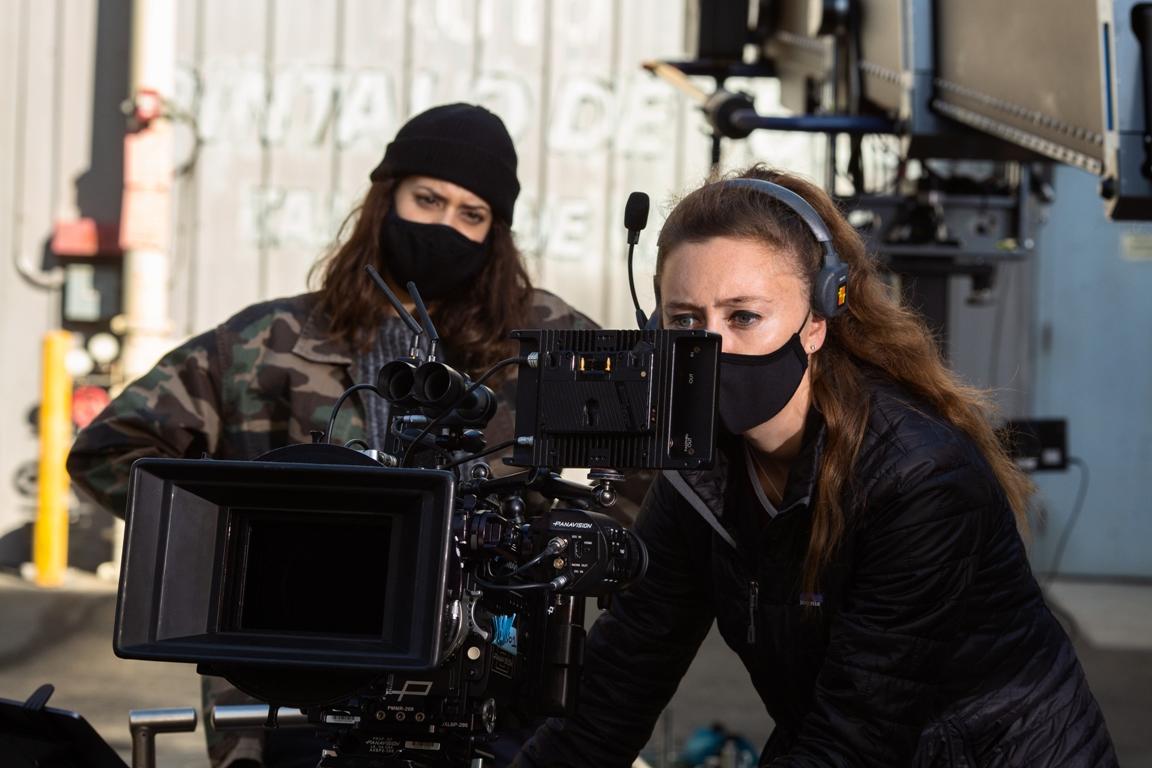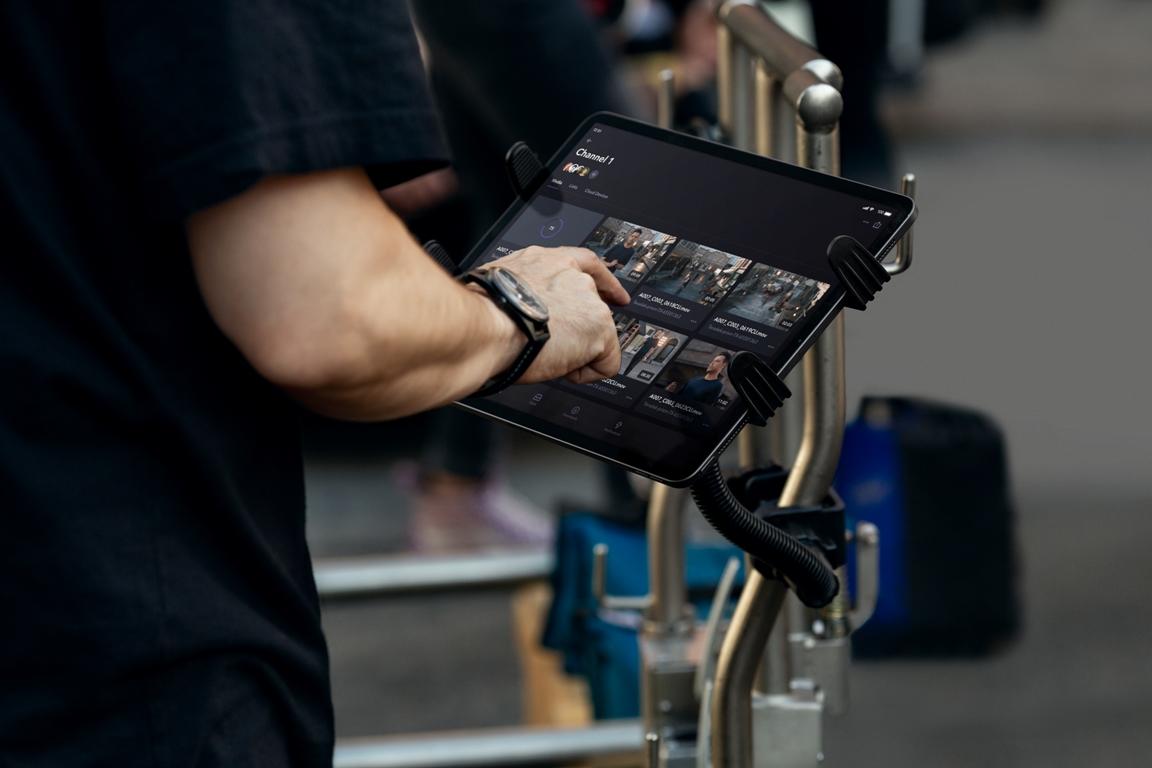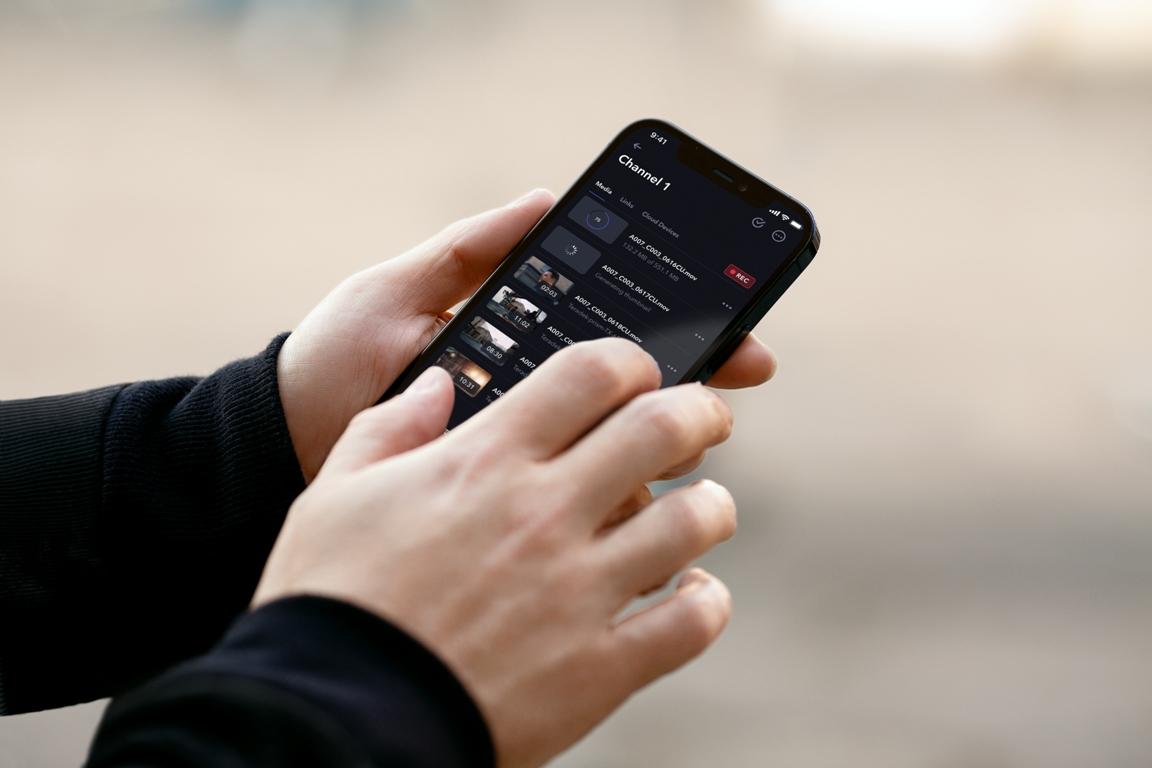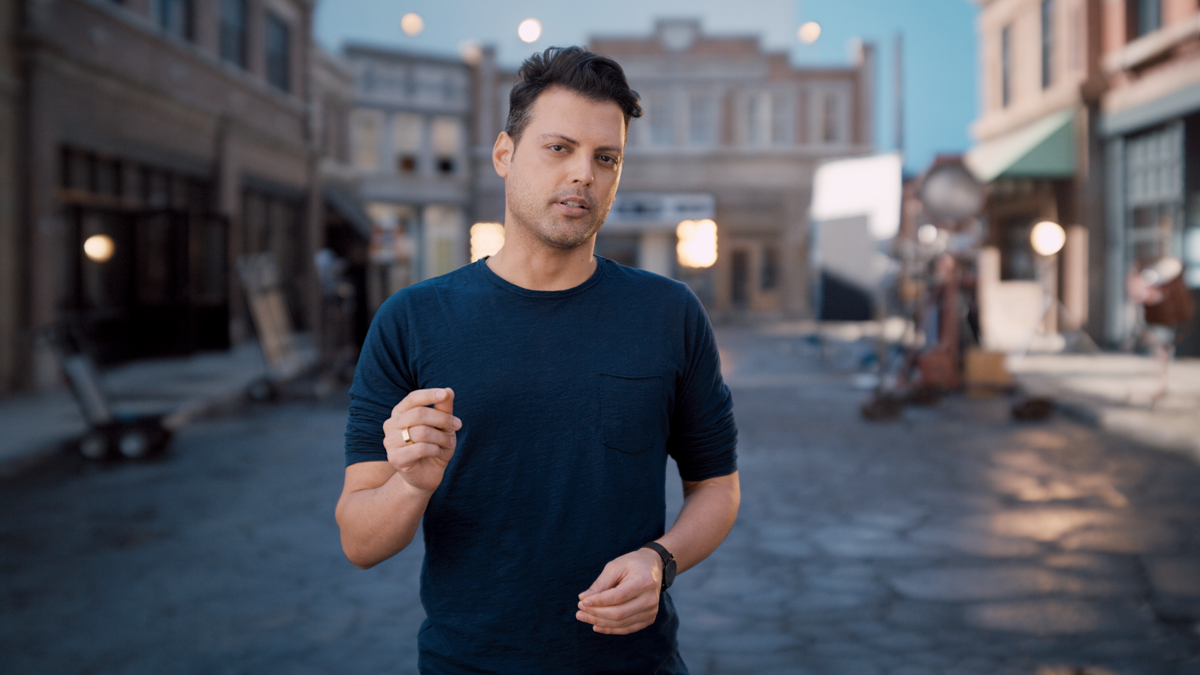For most office workers, the "stay at home" orders delivered by governments at the start of the COVID-19 pandemic has meant lingering kitchen-chair backaches and awkward after-work Zoom drinks. For Max Votolato, the co-producer of Hollywood thriller Songbird, directed by Adam Mason, WFH has been an entirely different challenge: to manage the delivery of a full-length feature film from his own house, watching what was happening on set through the screen of an iPad Pro.
When on March 19th, California's 40 million residents were asked to stay at home, no exceptions were made for Hollywood. Film productions only re-started at the beginning of June, with very restrictive health and safety protocols that required crews to be as small as possible when shooting on set.
Votolato remembers that his first job was to look at different technologies that might make filming possible. "In the beginning, we thought we'd have to make this movie with no crew. We thought we'd get actors to film themselves with an iPhone, from their own homes" he says with a laugh.
SEE: Nextcloud Hub: User tips (free PDF) (TechRepublic)
A camera-to-suitcase method was pitched, by which cases would be shipped, complete with cameras, tripods, professional audio and foldable lighting rings, for actors to film themselves from their living rooms.
Songbird was the first feature film that got back to work in Hollywood, despite having to comply with the new protocols; shooting on set was a so-called "skeleton crew" comprising the bare minimum of staff required. Director, actors and camera operators made up a team of about 20, where the film would have normally required up to 100 staff.
While IT departments around the world scrambled to deploy laptops and initiate colleagues to Microsoft Teams, Votolato and his team, too, were finding that technology might hold the keys to make things work. Using a brand-new method dubbed "camera-to-cloud", the film's producers, editors, art directors, sound mixers, and any crew member who couldn't be on set, were all able to follow what was being shot in real time but at a distance.
They could also contribute as if they were on set, by providing live feedback as filming happened, writing down advice and notes via a centralized platform that all authorized participants could log into.
The idea of using connected cameras on a film set was yet untested, but professional video reviewing platform Frame.io had already been working on the concept. The connected cameras on set streamed footage over 4G or LTE connection to remote participants, meaning that everybody was able to watch production as it was happening, even with only a fraction of the crew physically together.
With video villages – the area on a film set where crew members can watch the movie being shot through a large monitor – now out of the question due to the health crisis, the idea quickly won over the team.
"It was like having a video village in your pocket," Votolato tells ZDNet. "We were in a situation where we couldn't have a traditional on-set configuration; and yet a video village is something you usually always have on a movie. When you tell a filmmaker that we can't have a video village, they'll ask: How are we going to film this?"

Songbird was the first feature film that got back to work in Hollywood, despite having to comply with the new protocols.
Image: Frame.ioVotolato and his team were already familiar with Frame.io – an established brand for film creatives, whose platform has been used to carry out edits on projects ranging from Jordan Peele's Get Out to New Balance's latest ad campaign. Frame.io's vice president of innovation Michael Cioni explains that as Songbird's team faced the challenge of an extremely limited on-set crew so the company's new camera-to-cloud concept was a good fit.
"Camera-to-cloud was the solution, and because we had a prior relationship with them, they became the first feature film to deploy it," Cioni tells ZDNet. "Technology effectively made up for the rest of the crew. People who were forbidden from being on set were able to collaborate as if they were, without barriers to their ability to creatively contribute."
According to Cioni, the problems that Songbird's crew was facing boil down to one fundamental observation: professional cameras have never been connected before. "The only camera that connects to the internet is your phone," says Cioni.
Frame.io's team has been working for months on a way to plug this gap. At the heart of the technology is a complex integration: the camera-to-cloud service requires a compatible piece of filming hardware – namely, cameras from Arri, Sony or RED – as well as specialized devices that can record, encode and send audio and video files from the camera into the Frame.io cloud platform.
In practice, this consists of fitting the camera with a Teradek transmitter, which comes in the form of a box that records a small, web-friendly version of the original file, called a proxy. Proxies are securely sent to the cloud as soon as the camera stops rolling after calling "cut", and become available to view at a distance on the Frame.io application, on iPhones, iPads or monitors.

Proxies are securely sent to the cloud as soon as the camera stops rolling, and become available to view at a distance on the Frame.io application, on iPhones, iPads or monitors.
Image: Frame.ioWhat this means is instant off-set access to what is being filmed, from any location and any device. For anyone that is remotely familiar with live-streaming on social media, that might seem like a natural occurrence; but when it comes to the film industry, the concept had never been tried before.
As Emery Wells, the co-founder and CEO of Frame.io, explains, this is a problem that the COVID-19 pandemic aggravated, but which was already deeply entrenched. "You have sets with up to 100 people. When you hit 'record', that file is recorded only on the camera, and guess what, everybody on set wants to see what had just been filmed," he tells ZDNet.
"Literally all the roles on set need to see what's being done, and previously they would have had to wait for proxies to be uploaded to a platform at the end of the day, or the next day. Now, they can see that in real time, and even if they aren't on set."
Songbird was shot over a month. Votolato followed the entire production from home, about 30 miles away from the set, with the Frame.io app constantly running on his iPad.

To support the camera-to-cloud service, Sprint, Verizon and T-Mobile subscriptions were purchased, which together provided good enough coverage to avert download problems or long waiting times.
Image: Frame.io"It freed me up three hours a day in the car to have the pleasure of doing this on set," says Votolato. "It's absolutely the greatest setup I've ever had. And I could've been anywhere in the world having the same experience."
Where Frame.io's camera-to-cloud service might have made the biggest difference, however, was in the post-production process. The platform, in effect, is not only designed for producers and directors to remotely follow the shoot, but also for editors: as proxies are uploaded to the cloud, they can be dragged onto a timeline and manipulated for the most basic color adjustments to sophisticated visual or audio effects. This, again, can be done in parallel while footage is still being shot, significantly reducing the turnaround time for editing.
SEE: How 3D printing is helping CERN scientists upgrade the world's largest machine
As Frame.io's Wells explain, the method is radically new for an industry that usually relies on the physical distribution of hard drives to editors. Typically containing a day's-worth of filming, and aptly named dailies, those hard drives are shipped to editors for processing – meaning that it could take anything between a day and a week for footage to enter post-production.
Wells has spent 15 years in the post-production industry, and has had plenty of time to grow frustrated with the delays caused by wait times. "With a large and complex feature film, it wouldn't be crazy for footage to take a week to get back to the editor," he says. "At the end of the day, the footage only exists in one place – the camera's hard drive. Editors would have to wait for that drive to get to them. That's what we're eliminating."

Emery Wells, the CEO of Frame.io, has spent 15 years in the post-production industry.
Image: Frame.ioUsing Frame.io's technology enables editors to get to work instantly, but also the rest of the team to watch work that's done. Through the shared platform, the entire body of the film at every step of production is effectively available for participants to access; and as the doors of editing rooms remained close during the pandemic, this again played a crucial role in helping Songbird see the light of day.
Post-production teams who would normally be working on shots collaboratively in the same room were still able to review each other's visual effects, music cues, trailers and rough cuts, provide feedback and advice, and pipe their own contributions back into the project.
Frame.io's team has ambitious expectations for the technology – and the concept of a connected camera is likely to go down well in industries that require a fast turnaround, such as newsrooms.
"For someone who is not in the film industry, it might seem obvious, because filming to cloud is something we do with our phones. But on professional sets, cinema cameras had no capability to do that until now," says Wells. "A lot of different components had to come together, like faster mobile networks and sophisticated hardware. We've gathered all the pieces."
Article From & Read More ( Making a Hollywood movie, from home: Using cloud computing to film a thriller in a pandemic - ZDNet )https://ift.tt/3t0xHmS
Film
Bagikan Berita Ini














0 Response to "Making a Hollywood movie, from home: Using cloud computing to film a thriller in a pandemic - ZDNet"
Post a Comment